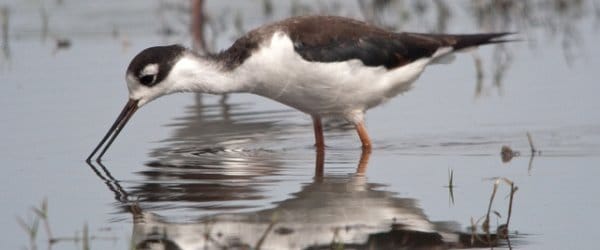 Black-necked Stilt (Himantopus mexicanus) photos by Larry Jordan
Black-necked Stilt (Himantopus mexicanus) photos by Larry Jordan
Click on photos for full sized images.
This female Black-necked Stilt (Himantopus mexicanus) is distinguished from the male by her paler brownish back and scapulars. The male of the species has the upper portion of the head, back of neck, back and wings all glossy black. He also has longer legs than the female.
The male is the only Black-necked Stilt in the second segment of this video, along with several Greater White-fronted Geese, and the third bird that comes into view in the final segment that is larger than the other two birds.
httpv://youtu.be/dfSk54WICQ8
Either one is unique in its plumage so as to be unmistakable wandering the shoreline anywhere within their range.
I found these beauties at Sacramento National Wildlife Refuge, one of the many locations the Black-necked Stilt breeds in the California Central Valley (map courtesy of Terry Sohl at South Dakota Birds).
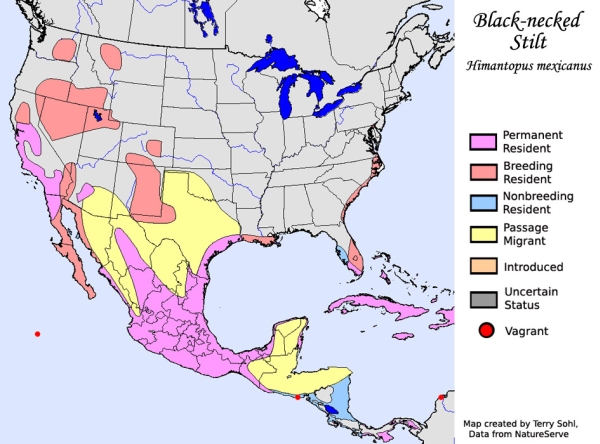
Black-necked Stilts will wade in water of any depth up to the height of their breast.
They avoid getting their breast wet1…
which shouldn’t be a problem according to my iBird Explorer iPhone app…
which states that they have the second longest legs in proportion to their bodies of any bird…
exceeded only by flamingos.
They forage day and night…
mostly for aquatic invertebrates, by pecking them off the water surface…
but they will also plunge their heads into the water for fish and snails.
References:1Birds of North America Online


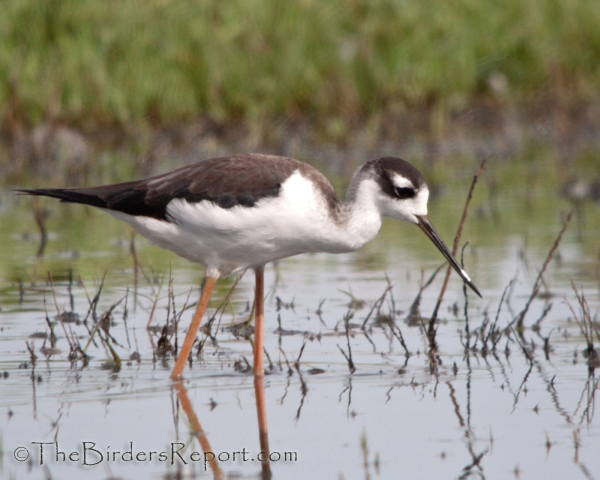
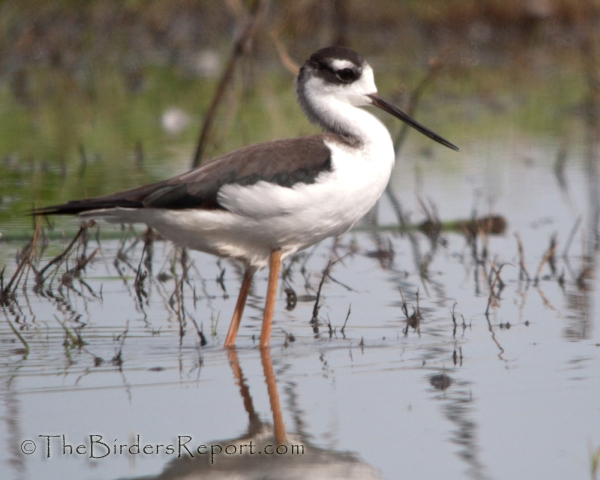
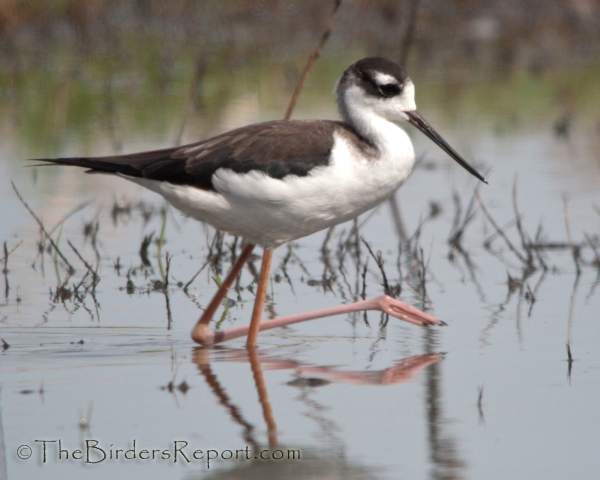

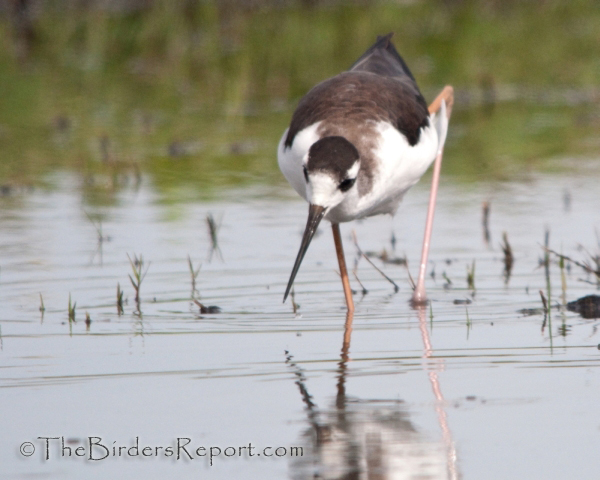
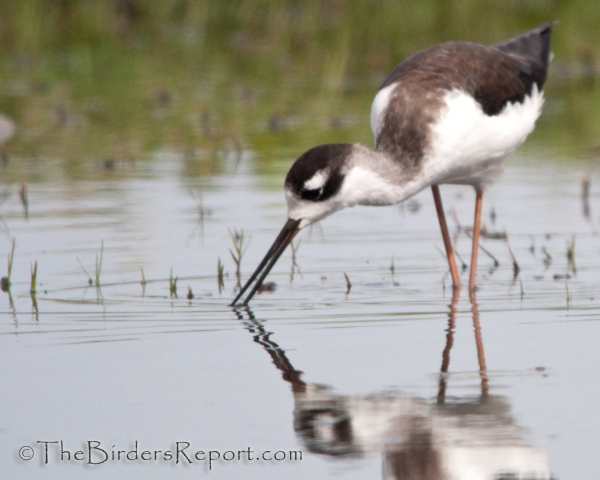
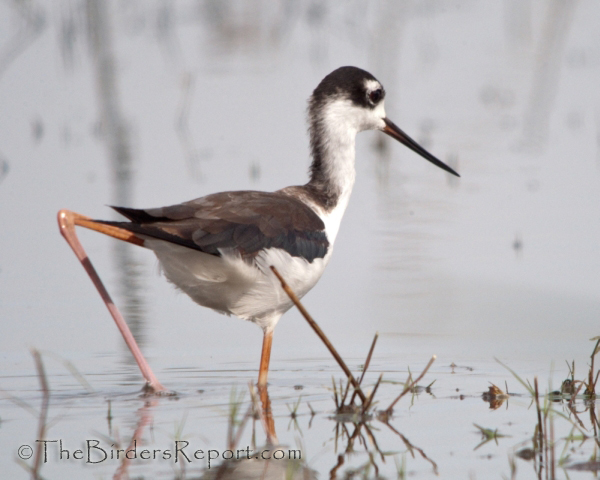
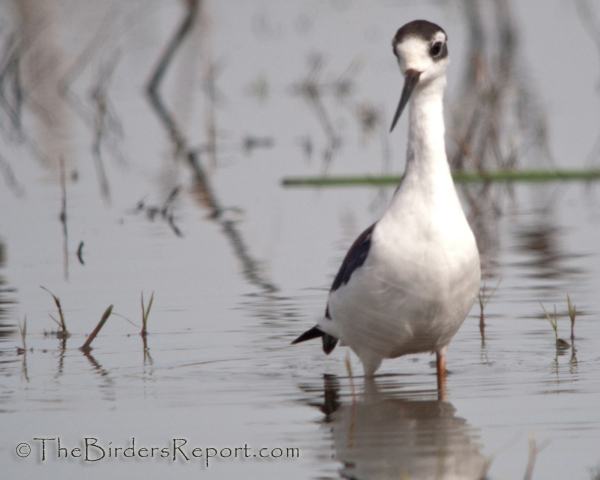











A favorite of mine. Thanks for the enjoyable pics.
Easily among my favorite species. Something about Black-necked Stilts and American Avocets that make one’s heart sing!
I love these birds, and could watch them for hours–and have done so, at Bombay Hook NWR in Delaware. I was especially thrilled to see and photograph one in the Magee Marsh area in northwest Ohio this past spring.
The Black Necked Stilt is one of my favorites. Great post and photos.
Black-necked Stilts also regularly nest in western Nebraska, and just this past summer, young were seen in northeast Nebraska, nearly to the Missouri River.
@Jason you are very welcome
@Robert they are graceful aren’t they?
@Barb I would love to visit Magee Marsh in the springtime
@Eileen they are one of my favs too, thanks!
@James I’m glad to hear that their range may be expanding!